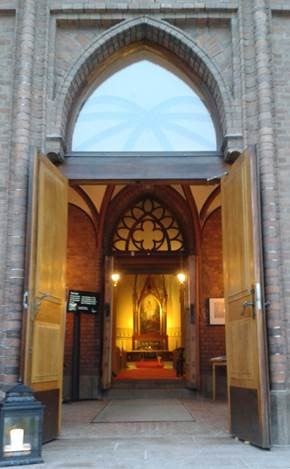
Opening hours:
Tuesday 12.00 – 17.00
Wednsday 12.00 – 17.00
Thursday 12.00 – 17.00
Friday 12.00 – 15.00
Saturday 12.00 – 15.00
Sunday 10.00 – 15.00
Free entrance.
Changes may occur due to weddings, funerals and payed concerts.
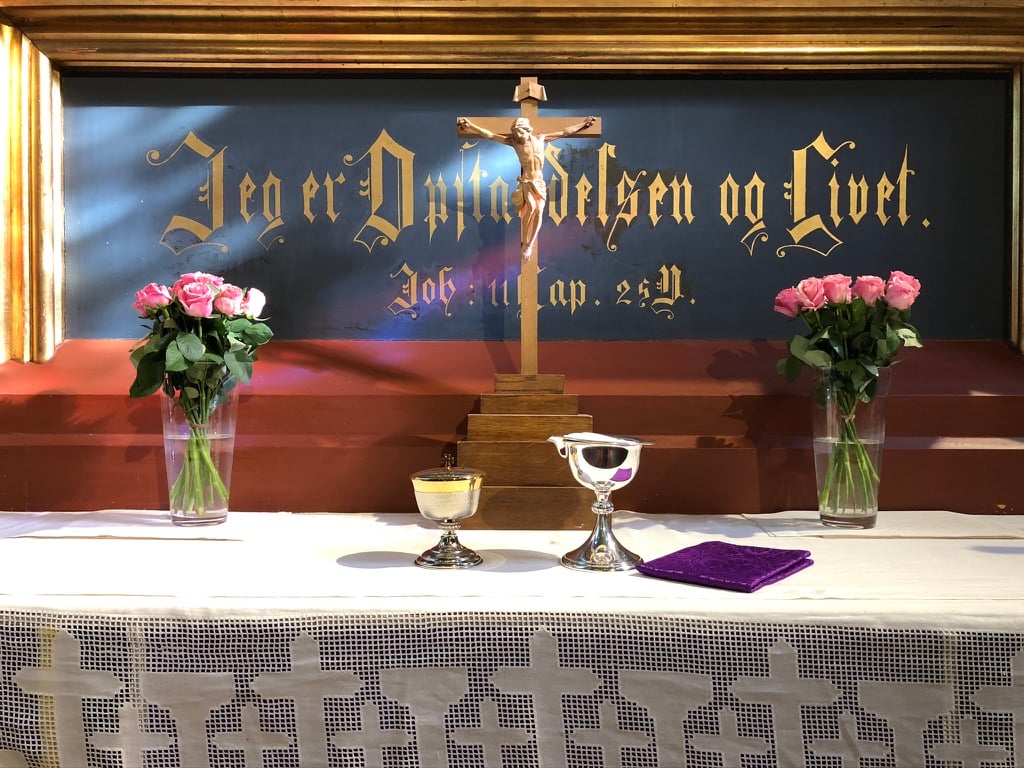
Worship:
Sung eucharist: every Sunday at 11.00
Sung eucharist (short): every Tuesday at 12.00
Morning prayer: every Wednsday at 08.30
Prayer for peace: every Thursday at 12.00
Services and prayers are usually held in Norwegian.
Virtual walk in Bragernes Church:
General walk through the whole church (press here)
A walk through the church for children (press here)
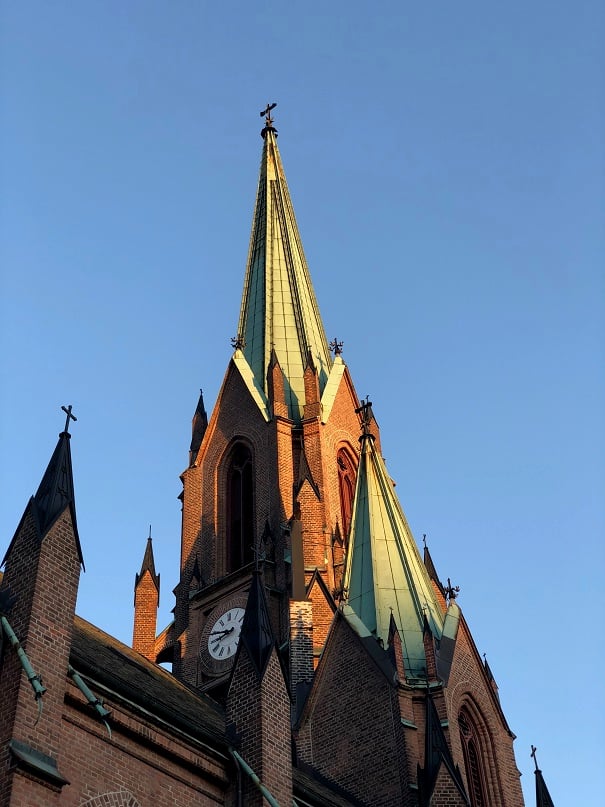
Information about Bragernes Church:
The present church of Bragernes is a rectangular church in red brick, designed in the neo-gothic style by Ernst Robarth Dalin Norgrenn (1839 - 1880). The church was consecrated on 12th July 1871, exactly 5 years after the great fire at
Bragernes, when the old church burned down.
The very first church at Bragernes was a modest wooden church. Construction was approved in 1621 and on completion in 1628, this church was named "Church of the Holy Trinity" (Hellig Trefoldighetskirke) and was situated at Gamle
Kirkeplass.
In 1696 the belfry was replaced by a new tower in grey, natural stone. In 1708 this church was demolished and replaced by a larger wooden cruciform church. Regrettably, this church was lost in the great fire of 1866, apart
from the old belfry. Vicar Jørgen Moe fought for the preservation of the belfry, but unfortunately this was also demolished. In 1941, a monument to the old church was erected at the site, based on a well-known picture of the building.
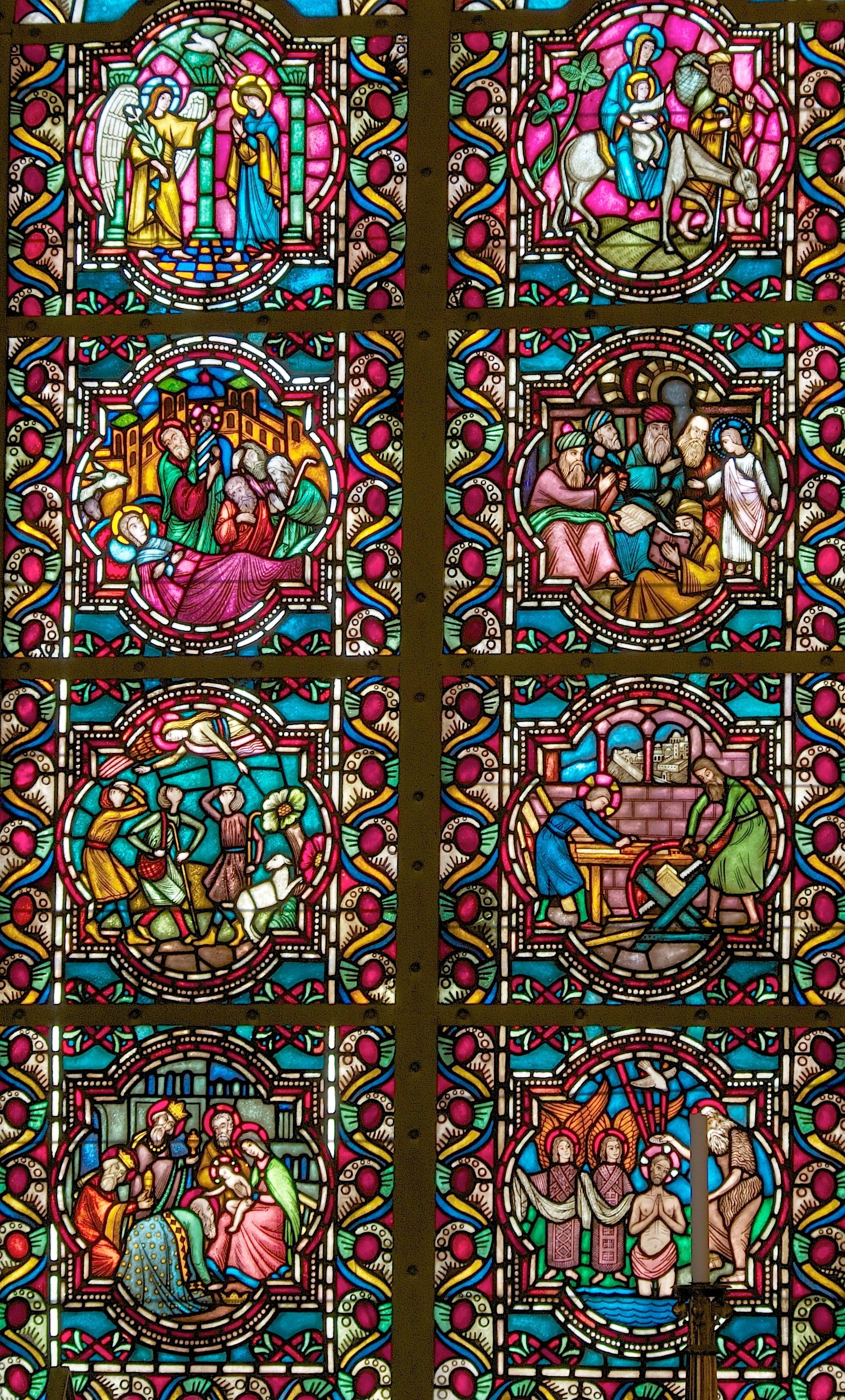
The Stained Glass Windows
The stained glass windows in the choir originate from 1907 and the artist is unknown. The ornamentation in the two windows in the choir was donated by Lawyer Thorne and wife Eliza.
The two centre windows in the church nave depict the twelve apostles, except for Judas Iscariot who is replaced by Paul.
In the upper and lower windows on the same side as the baptismal font, we find medallions with motives from the birth and childhood of Christ – executed together by the two artists Hans Ødegaard and Oluf Wold Thorne and consecrated in 1914.
On the opposite side, the Medallions by the artist Magnhild Haavardsholm are depicting the Passion and the Resurrection. These were consecrated at Christmas 1930.
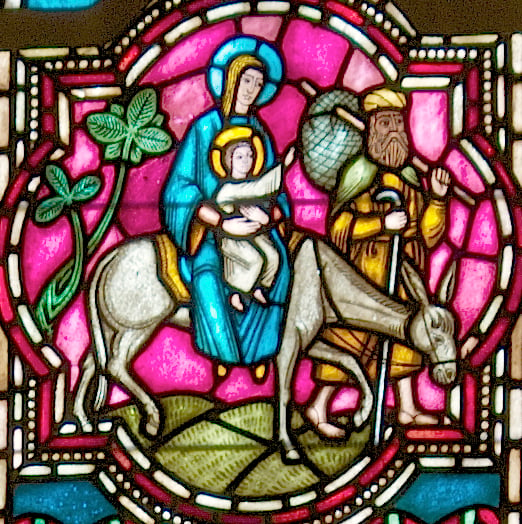
The Wedding Chapel
Right from when church was built, it was the intention to have a chapel-like extension specially for the teaching of confirmands. This room was the first part of the church to be taken into use in the Summer of 1871.
It was converted into a chapel by the architect Arnstein Arneberg in 1942, and has since then been called the Wedding Chapel.
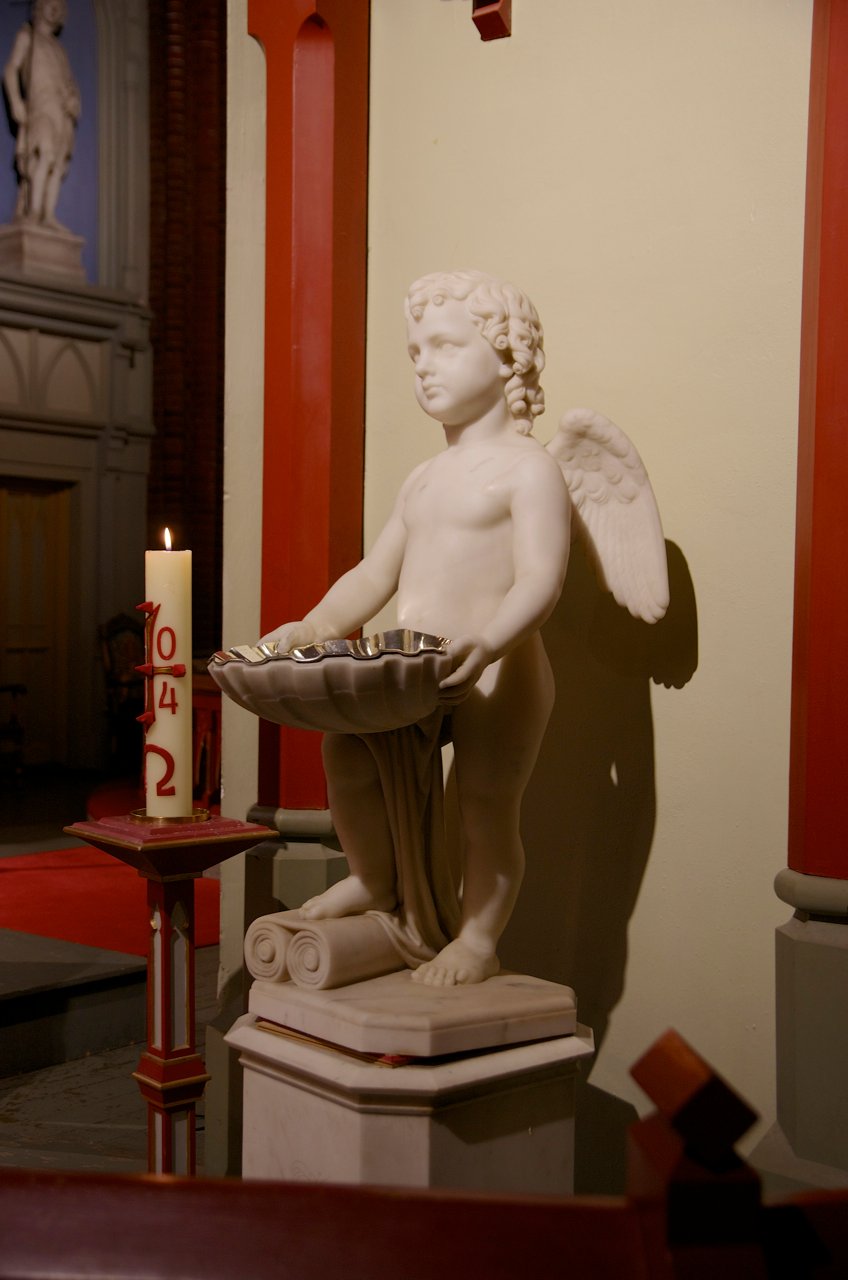
The Baptismal Font
In marble, carved in 1871 in Rome by Christopher Borch. Designed like an angel holding a large seashell, the angel is shaped like a child figure.
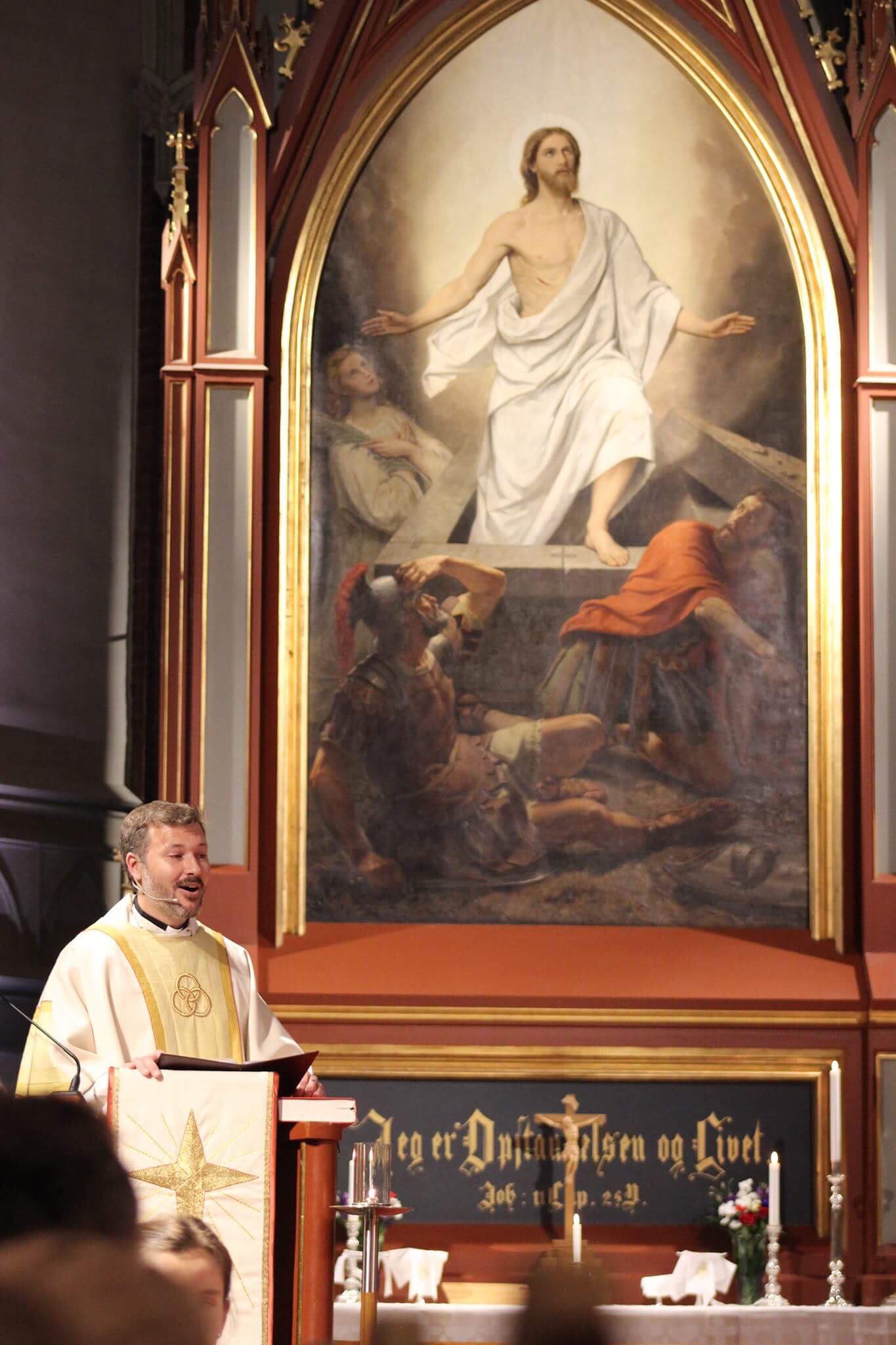
The Altar Piece
Depicting "The Ressurrection", it was executed by Adolph Tidemand, one of the great Norwegian painters of the national romantic period. A number of painters have since copied this painting, and there should be about 70 copies throughout the country.
During the Second World War the altar piece was removed and hidden away in the old Silver Mines in Kongsberg.
In 2016 the Altar piece underwent conservation work.

The Four Marble Sculptures
Placed in niches in the choir, they were a gift from a private donor for the 100th anniversary of the city of Drammen in 1911. The sculptures are signed "A. Frilli, Firenze" and are copies of famous sculptures in Orsanmichele ,Florence. From the Florentine early renaissance in the first half of the 15th century.
On the North-Western wall, Peter and John the Baptist are depicted. The opposite wall depicts Mark and Matthew.
The church ship
The Ship Hanging above the aisle, in front of the organ gallery, is an inheritance from the old church. The ship is thought to have hung in the old church since the first half of 18th century and was one of the items rescued from the great fire
in 1866.
The Carillon
was a gift from some expatriate citizens of Drammen on the occasion of the city’s 150th anniversary in 1961. The Carillon originates from Bergholz Klockgjuteri, Sigtuna and comprises 35 bells in total. Tunes from hymns can be heard from the church every day throughout the city centre.
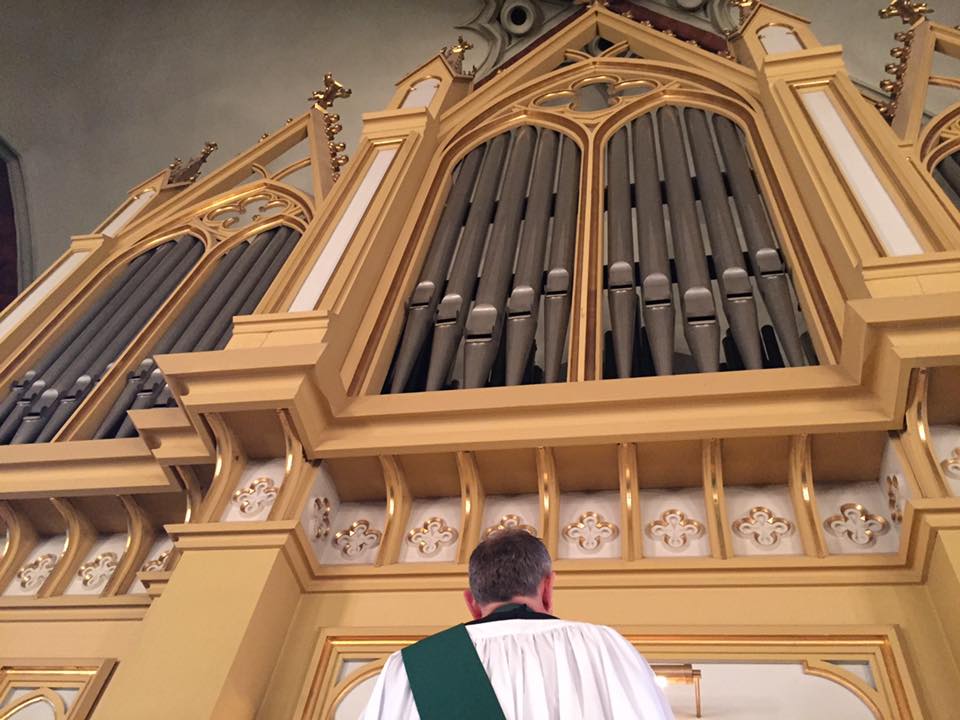
Instruments
The main organ was played for the first time on Christmas Eve 1871, even though it was not completed. The instrument was built by Claus Jensen, possibly our most significant organ builders.
In 1929 the old organ was removed and replaced by a new one built by the H.J. Jørgensen Organ Factory.
By 1980, this organ was in total disrepair and extensive repairs were carried out. However, these repairs were not adequate, so a new organ was built by Carsten Lund of Denmark and consecrated on Sunday 28th November 1998.
A smaller choir organ (with 12 stops) was consecrated by Bishop Laila Riksaasen Dahl on 15 March 2009. This organ was also built by Carsten Lund, København.
The Grand piano was financed by a donation from Sparebanken Øst in 2010.
Contact us:
e-mail: post.drammen@kirken.no
phone: (+47) 32 98 91 00
The Vicar Per Erik K. Brodal: pb887@kirken.no
Bjørg Juriks, coordinator open church and guided tours: bj353@kirken.no
Post adress: Bragernes parish, Kirkegata 7, 3016 Drammen, Norway
Adress Bragernes Church: Cappelens gate 9, 3016 Drammen, Norway
(link to map)
Facebook: http://facebook.com/bragerneskirke
Instagram: https://www.instagram.com/bragerneskirke/

